
I bet you are very familiar with rice cookers as you might be using them on a daily basis. However, if you want to cook in a Japanese household, understanding all the functions of both tools is very important since most of these electronics are in Japanese only.
But don’t worry, we are here to walk you through every single button on these electronic devices to make sure that you will know the basic control & commands. Let’s start with the rice cooker!
Japanese Rice Cooker for Japanese rice.
Having rice in their daily meal is essential for a lot of people and Japan is just one of these countries. But what makes Japan stands out the most when it comes to rice cooking is not only the premium quality and unique flavor of Japanese rice but that the rice cooking technology of every household’s dinner table is top notch. this is because a majority of the rice cookers in Japan are designed to do multiple things other than just cooking rice. The more advanced these functions are, the more expensive the rice cooker gets; a top-tier rice cooker can cost you a small fortune.
But since I don’t have that extra money to spend and the only thing I want my rice cooker to do is to cook rice, the rice cooker that I will be using in this article will be very basic (yet still has plenty of buttons as well as a baking option).
The most important button is “炊飯”
炊飯/再加熱 (suihan/ saikanetsu): Start or cook button, it also serves as the reheat button.
予約 (yoyaku): Reservation, you only need to use it when you want to plan ahead when to have your rice cooked.
Left & right direction: the two buttons are only used when adjusting time.
メニュー (Menu): by pressing this button, you can choose between the cooking menus that are shown on the side of the display. In order to choose a menu, simply press this button and you shall see a small arrow pointing at each option. Menu as follow:
Usually, you choose “白米”
エコ炊飯 (Eco-suihan): Eco mode, rice cooking in this mode will cost less electricity, but in return, the rice will be slightly harder than usual.
白米(Hakumai): White rice, this is the most used and common mode to use.
炊き込み(Takikomi): Use this mode when you are making takikomi-gohan, a Japanese delicacy which cooks rice along with other ingredients.
無洗米(Musenmai): This mode allows you to cook without washing the rice, making it more eco-friendly in a way. But you will need to use the “non-wash rice” instead of your typical white rice. The measuring cup of the non-wash rice is also slightly different than the normal ones.
白米急速: If you are in a hurry, use this option, however, your rice will be a bit harder than usual.
You can cook the porridge, Genmai, Zakkokumai and Kinmemai too
おかゆ( Okayu): The Porridge/Congee menu, you can also add different toppings, just like takikomi-gohan.
玄米( Genmai): Brown rice. You might be familiar with this term if you are a tea drinker. This option is dedicated for genmai.
雑穀米(Zakkokumai): Multigrain rice. Zakkokumai is blend of different grains including white rice, genmai...etc.
金芽米(Kinmemai): Kinmemai sits at a unique position where it is somewhere between genmai & musenmai. It is fully milled yet the cereal gem is still intact which gives a great flavor and nutritional benefits.
Last but not least, we have the 保温/とりけし (Ho-on/ Torikeshi) button. This is the button to warm or cancel. Once cooking has finished, the light will be on indicating the rice cooker is now in warming mode and to keep your rice as hot as possible. You can cancel and turn off the rice cooker by pressing this button.
A simple recipe for Takikomi-gohan
Of course, we will not end this article just like that, here is a simple guide on how to make Takikomi-gohan (炊き込みご飯). For this recipe, you will need:
- 2 Cups of rice
- 50 grams of chicken breast
- 100 grams of shimeji mushroom
- 30 grams of carrots
- 15 ml of sake
- 8 grams of hondashi
- 20 ml of soy sauce
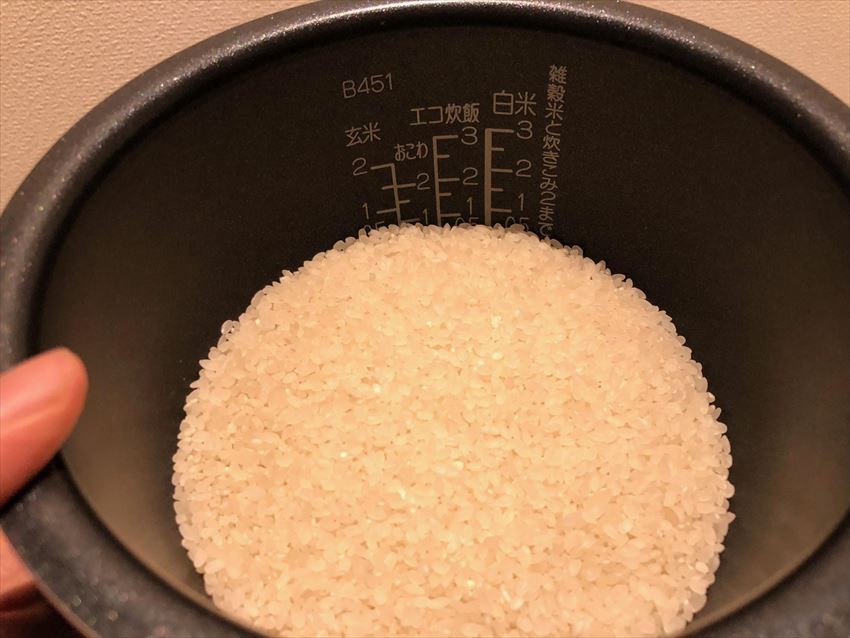
First, give your rice a couple of rinses.

Put in soy sauce, hondashi, and a little bit of sake. Pour in slightly less water than you would usually use for cooking normal rice since some ingredients are filled with water.
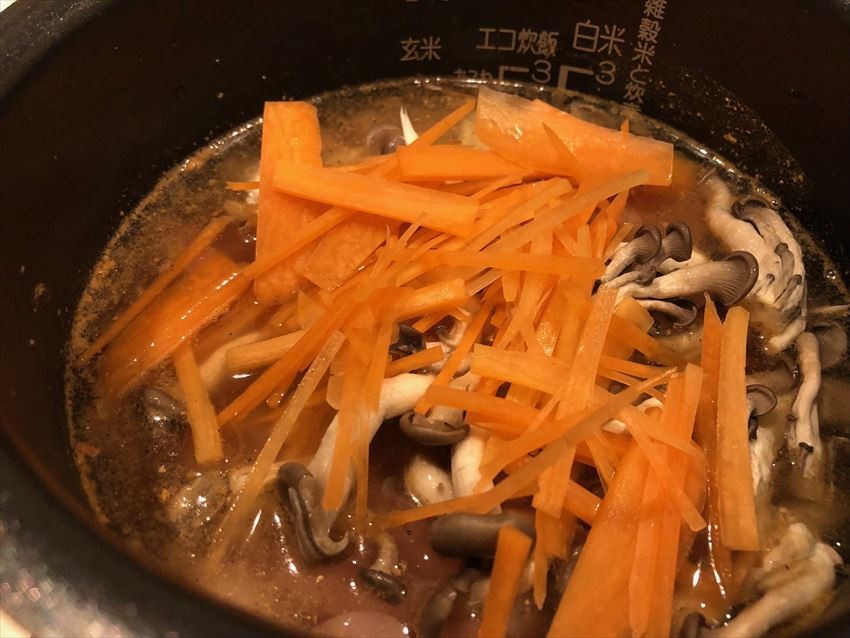
Then, top it with whatever you want to cook with the rice. For this recipe, I put in shimeji mushrooms, carrots and chicken breast.
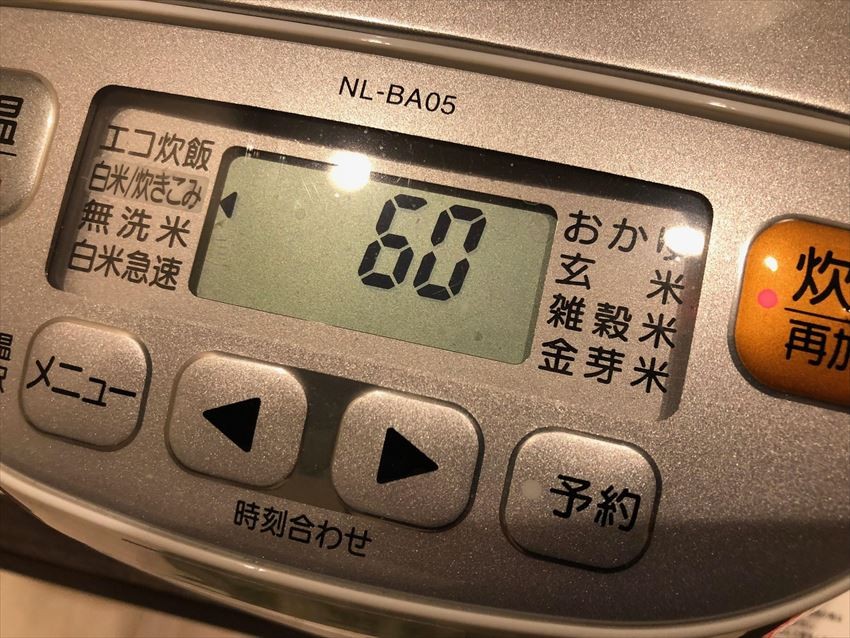
Finally, close the lid. Put the rice cooker into white rice mode or takikomi mode (炊き込み) and press start. A number will show on the display telling you how long it will take.
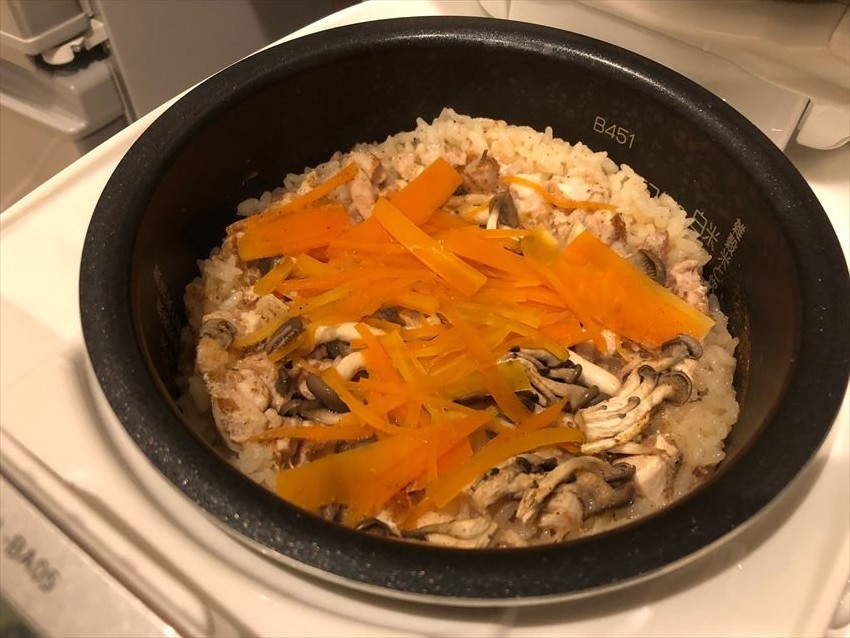
When the rice is ready, the rice cooker will play a sweet melody letting you know that it’s time to eat!
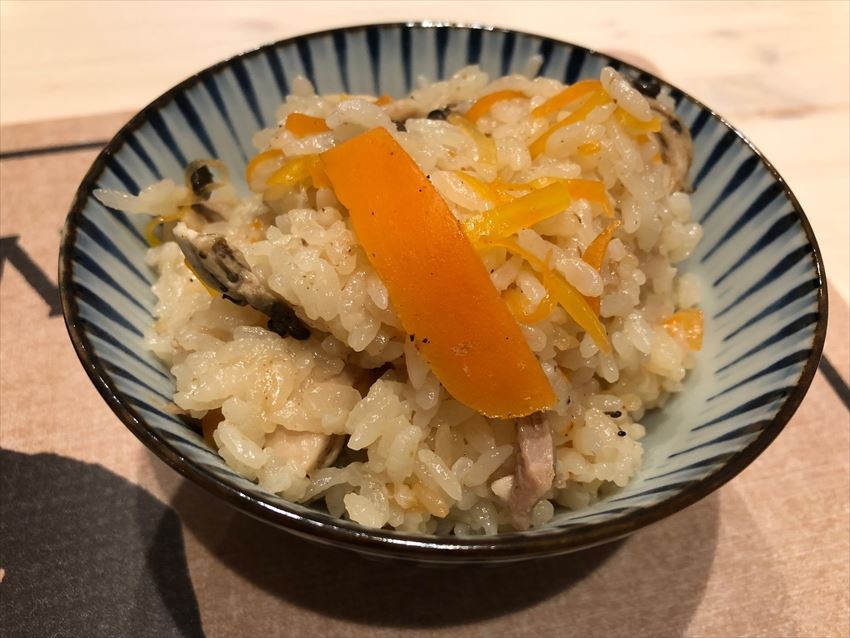
It’s that simple! Feel free to try it at home with any ingredients you like!

Comments